Geophysicists and Inuit hunters unite to record narwhals, Scientists define path of microplastics from insects to river predators, Distinct timeline for climate-related coral death and more…
1. University of Exeter scientists – define path of microplastics from insects to river predators
 A species of river bird is swallowing hundreds of plastic fibers every day via their insect prey, research by Cardiff University and the Greenpeace Research Laboratories at the University of Exeter has shown. Dippers are also inadvertently feeding thousands of plastic fibers contained in insects to their nest-bound chicks during their development. The aquatic songbirds depend on river insects for their food supply, so widespread contamination of insects by plastic means they cannot avoid this source of pollution.
A species of river bird is swallowing hundreds of plastic fibers every day via their insect prey, research by Cardiff University and the Greenpeace Research Laboratories at the University of Exeter has shown. Dippers are also inadvertently feeding thousands of plastic fibers contained in insects to their nest-bound chicks during their development. The aquatic songbirds depend on river insects for their food supply, so widespread contamination of insects by plastic means they cannot avoid this source of pollution.
2. Geophysicists and Inuit hunters unite to record narwhal communications
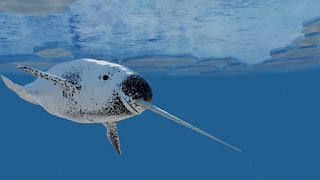 With the help of Inuit hunters, geophysicists recently recorded the various calls, buzzes, clicks and whistles of narwhals as they summered in a Greenland fjord. The recordings help scientists better understand the soundscape of Arctic glacial fjords and provide valuable insight into the behavior of these shy and mysterious creatures, according to the researchers.
With the help of Inuit hunters, geophysicists recently recorded the various calls, buzzes, clicks and whistles of narwhals as they summered in a Greenland fjord. The recordings help scientists better understand the soundscape of Arctic glacial fjords and provide valuable insight into the behavior of these shy and mysterious creatures, according to the researchers.
3. CIRES study uncovers a distinct timeline leading to climate-related coral death
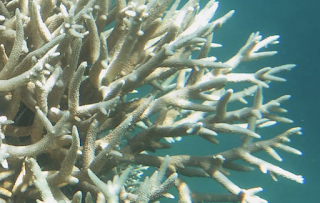
A squad of climate-related factors is responsible for the massive Australian coral bleaching event of 2016. If we’re counting culprits: it’s two by sea, one by land. First, El Niño brought warmer water to the Coral Sea in 2016, threatening Australia’s Great Barrier Reef’s corals. Long-term global warming meant even more heat in the region, according to a new CIRES assessment. And in a final blow that year, a terrestrial heatwave swept over the coast, blanketing the reef system well into the winter, Karnauskas found. The final toll: more than half the coral in some parts of the Great Barrier Reef died.
4. Sea snake sight has been evolving and optimizing for 15 million years
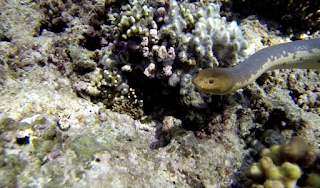 New research led by the University of Plymouth (UK) has for the first time provided evidence of where, when, and how frequently species have adapted their ability to see in color. It suggests sea snakes’ vision has been modifying genetically over millions of generations, enabling them to adapt to new environments and meaning they can continue to see prey—and predators—deep below the sea surface.
New research led by the University of Plymouth (UK) has for the first time provided evidence of where, when, and how frequently species have adapted their ability to see in color. It suggests sea snakes’ vision has been modifying genetically over millions of generations, enabling them to adapt to new environments and meaning they can continue to see prey—and predators—deep below the sea surface.
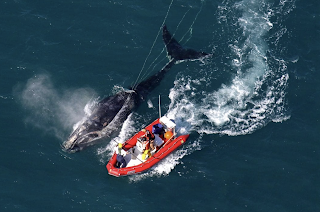 A new study by researchers at Woods Hole Oceanographic Institution (WHOI) found that New England’s historic lobster fishery may turn a higher profit by operating with less gear in the water and a shorter season. The findings could provide a path forward for the lobster fishing industry, which is under pressure to move away from traditional pot fishing that uses long vertical lines of rope known to entangle and kill endangered North Atlantic right whales and other protected species. The study was published this week in the journal Marine Policy.
A new study by researchers at Woods Hole Oceanographic Institution (WHOI) found that New England’s historic lobster fishery may turn a higher profit by operating with less gear in the water and a shorter season. The findings could provide a path forward for the lobster fishing industry, which is under pressure to move away from traditional pot fishing that uses long vertical lines of rope known to entangle and kill endangered North Atlantic right whales and other protected species. The study was published this week in the journal Marine Policy.
6. Scientists define basic principles that are consistent in all diving animals
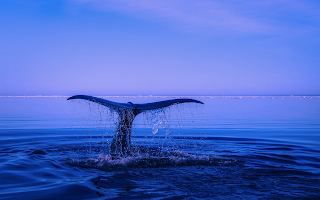 Diving as a lifestyle has evolved many times in the animal kingdom, and the ecology of all diving animals is essentially shaped by how long they can hold their breaths. According to new research, the world’s diving animals – from small insects to giant whales – are all governed by a number of similar principles. Using the largest dataset ever compiled, an international team of scientists has examined how metabolic constraints govern the diving performance of air-breathing aquatic species, all of which have evolved to maximize the amount of time they can spend underwater.
Diving as a lifestyle has evolved many times in the animal kingdom, and the ecology of all diving animals is essentially shaped by how long they can hold their breaths. According to new research, the world’s diving animals – from small insects to giant whales – are all governed by a number of similar principles. Using the largest dataset ever compiled, an international team of scientists has examined how metabolic constraints govern the diving performance of air-breathing aquatic species, all of which have evolved to maximize the amount of time they can spend underwater.
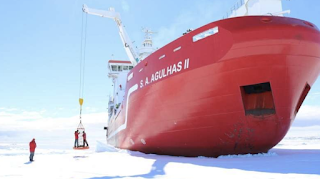 Ice shelves, massive floating bodies of ice, are well-known for their buffering effect on land-based ice sheets as they slow their flow towards the sea. This buffering effect plays an important role in moderating global sea-level rise. The Antarctic Peninsula has been experiencing high levels of change during the last 30 years due to atmospheric and ocean warming. Larsen A Ice Shelf collapsed in 1995 and Larsen B broke up in 2002. The demise of its neighbors has raised questions regarding the future stability of Larsen C, Antarctica’s 4th largest ice shelf.
Ice shelves, massive floating bodies of ice, are well-known for their buffering effect on land-based ice sheets as they slow their flow towards the sea. This buffering effect plays an important role in moderating global sea-level rise. The Antarctic Peninsula has been experiencing high levels of change during the last 30 years due to atmospheric and ocean warming. Larsen A Ice Shelf collapsed in 1995 and Larsen B broke up in 2002. The demise of its neighbors has raised questions regarding the future stability of Larsen C, Antarctica’s 4th largest ice shelf.
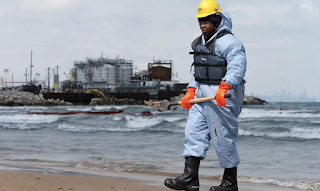
Ten corporations that agreed to a total of $56m in civil penalties for allegedly breaking environmental laws are not being required to make payments under a pause granted by the US government during the Covid-19 pandemic. The companies polluted air and water, including in communities already vulnerable to toxic pollution like East Chicago, Indiana, according to legal proceedings. They signed settlements with the government agreeing to pay fines without admitting liability but the justice department last month advised most of the companies of extensions in letters which were obtained by the government watchdog group Accountable.US via public records requests.




